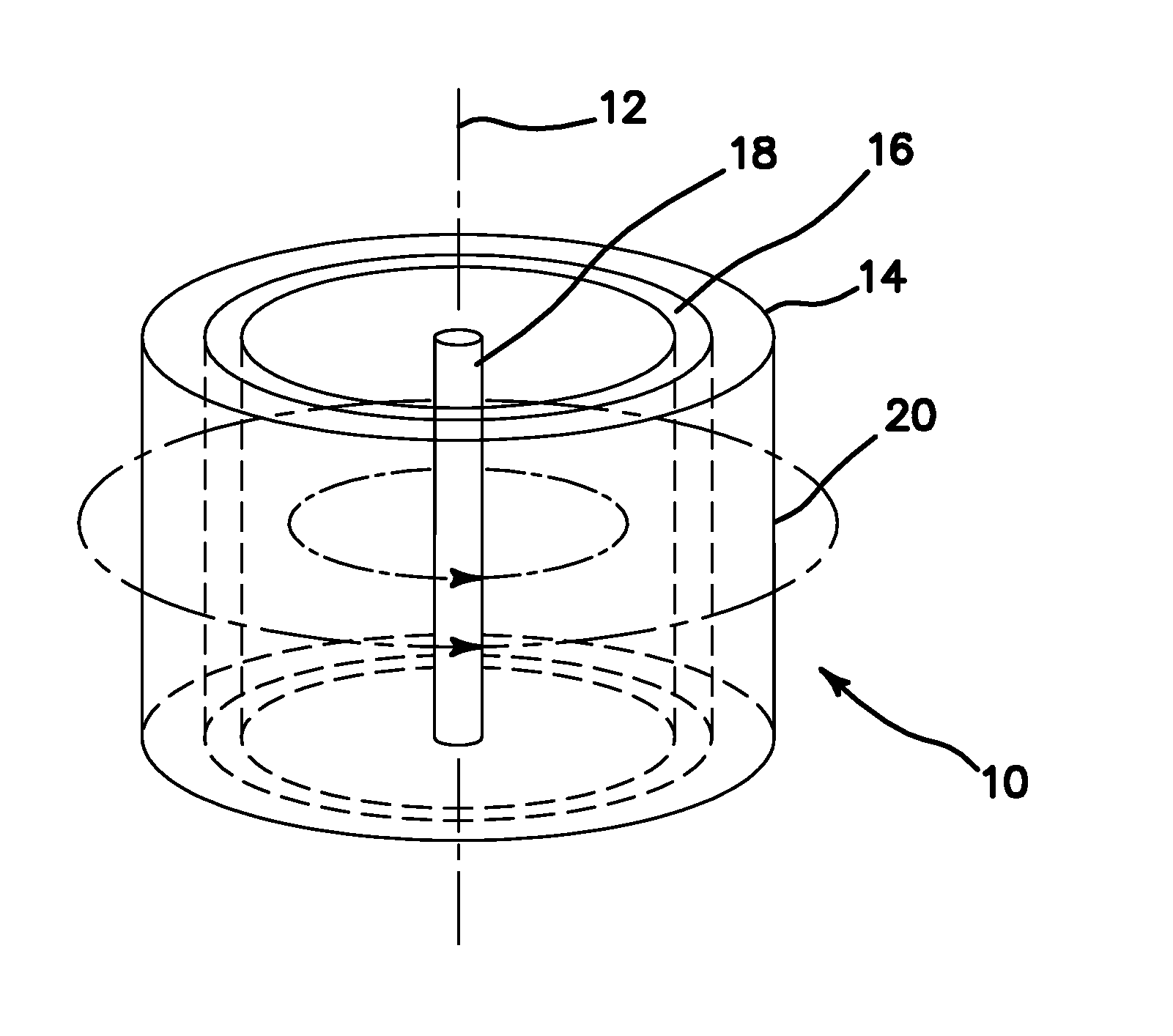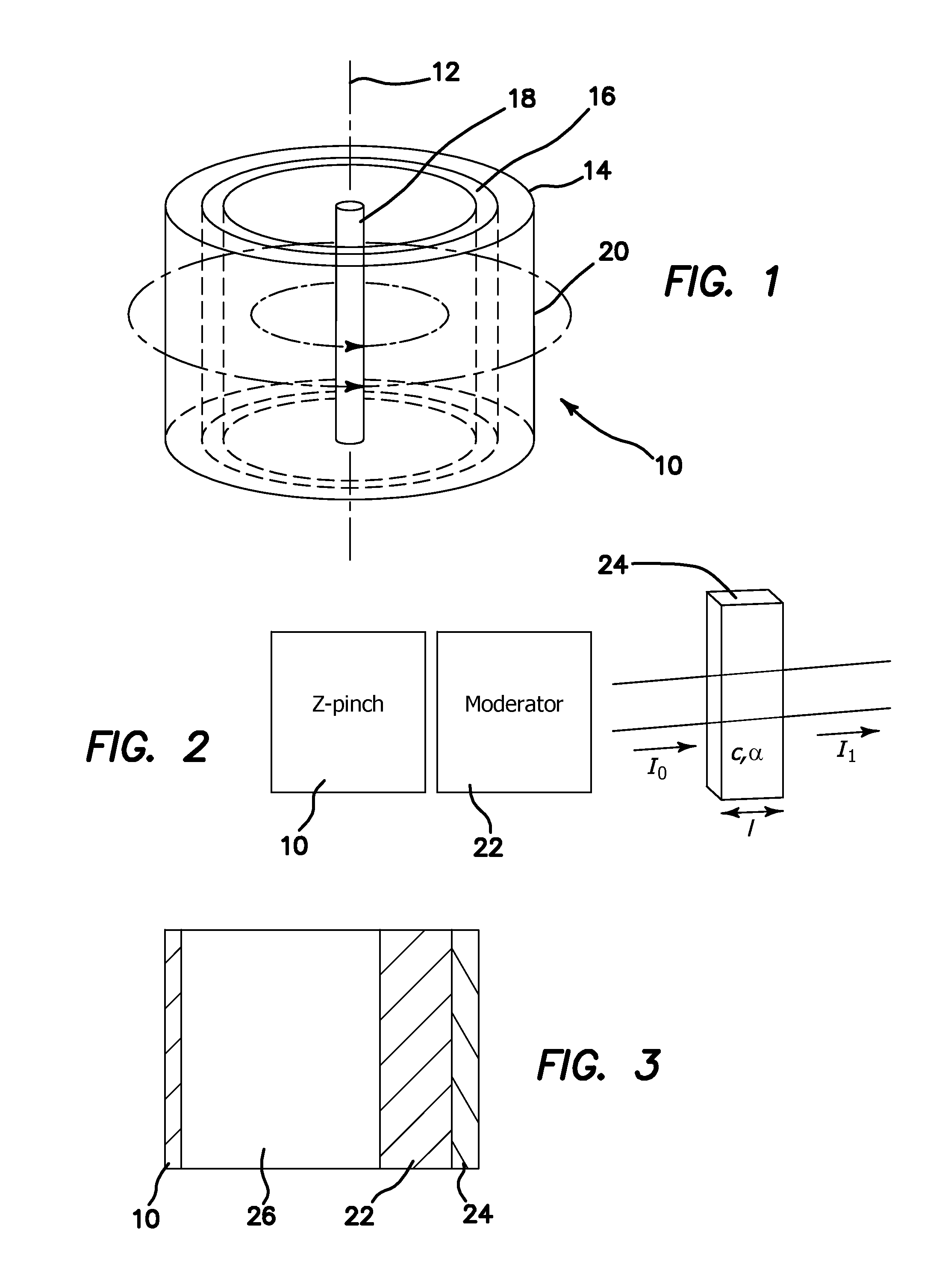Radionuclide production using a z-pinch neutron source
a neutron source and radionuclide technology, applied in nuclear reactors, nuclear engineering, greenhouse gas reduction, etc., can solve the problems of high cost, high labor intensity, limited production, etc., and achieve high neutron flux, high yield, and high number density
- Summary
- Abstract
- Description
- Claims
- Application Information
AI Technical Summary
Benefits of technology
Problems solved by technology
Method used
Image
Examples
Embodiment Construction
[0040]The illustrated embodiment in FIG. 1 is directed to a neutron source called staged Z-pinch machine 10, which is built and operated on a relatively small scale in highly cost effective way. Neutrons produced in a staged Z-pinch machine 10 are either 3.02 MeV or 14.1 MeV in a hot and dense plasma with size less than a millimeter in radius and one centimeter in length produced at the axis 12 of the staged Z-pinch chamber 14. The flux of these neutrons is comparable to the flux produced in normal research reactor. These neutrons can be thermalized at a fixed location outside the chamber 14 and can be used effectively in producing radionuclides.
[0041]Use of the staged Z-pinch machine 10 as diagrammatically depicted in FIG. 1 as an intense neutron source is a unique concept to produce high flux of neutrons capable of producing a significant level of neutron activation. In the illustrated embodiment a very large current flows through a cylindrical liner 16 made of high-Z plasma with ...
PUM
 Login to View More
Login to View More Abstract
Description
Claims
Application Information
 Login to View More
Login to View More - R&D
- Intellectual Property
- Life Sciences
- Materials
- Tech Scout
- Unparalleled Data Quality
- Higher Quality Content
- 60% Fewer Hallucinations
Browse by: Latest US Patents, China's latest patents, Technical Efficacy Thesaurus, Application Domain, Technology Topic, Popular Technical Reports.
© 2025 PatSnap. All rights reserved.Legal|Privacy policy|Modern Slavery Act Transparency Statement|Sitemap|About US| Contact US: help@patsnap.com


